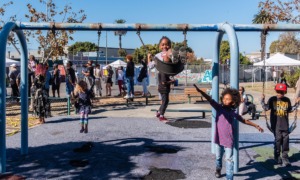Author(s): The Annie E. Casey Foundation – Jim Casey Youth Opportunities Initiative
Published: Jan. 30, 2019
Report Intro/Brief:
“This report turns the lens on young people who age out of foster care and explores four areas — education, early parenthood, homelessness and incarceration — where they fare worse than their general population peers. Readers will learn the economic cost of this shortfall and see how targeted interventions can help these youth while also erasing billions of dollars in unnecessary costs.
Summary of Findings
These estimates reflect costs by outcome area that could be avoided if there were no disparities between young people aging out of foster care and their peers in the general population.
- Education: 5,290 more young people would graduate from high school annually, leading to $2.17 billion in economic gains during their working lifetimes.
- Early parenthood: 2,866 fewer young women would experience early parenthood by age 19, resulting in avoided societal and taxpayer costs of $295 million for the first 15 years of the child’s life.
- Homelessness: 4,370 fewer young people would experience homelessness, which would save $9.6 million in spending on beds, per night across homeless episodes, needed to provide temporary shelter.
- Incarceration: 4,870 fewer young people would experience the juvenile justice system, resulting in $1.6 billion less spent on the cost of per-day detention, cost of crime to society and victim and recidivism rate.
Closing the gaps in education, housing, early parenting and juvenile justice outcomes would reduce costs to society by $4.1 billion for each new group of young people aging out of foster care.
A focus on economic costs does not minimize the emotional and personal costs for these young people. The emotional and personal costs are key considerations in any conversation about young people who leave foster care without strong and stable social, emotional and economic resources. Future Savings is designed to help inform and spur local, state and federal investments that can support young people who experience foster care and lessen the economic toll on public programs, society and young people.
>>> CLICK HERE to see all of Youth Today’s REPORT LIBRARY






























